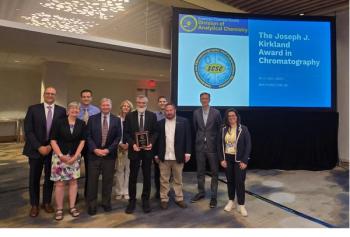
- The Column-02-04-2011
- Volume 7
- Issue 2
The Detection and Quantification of Multi-mycotoxins in Beer Samples using Orbitrap Technology with UHPLC
The Detection and Quantification of Multi-mycotoxins in Beer Samples using Orbitrap Technology with UHPLC.
Malted barley is the most common grain used in the beer making process. In recent years, small grains such as barley have been significantly affected by common fungal genera such as fusarium, alternaria, aspergillus and penicillium, all of which have shown high producing potential for a wide range of mycotoxins — toxic secondary metabolites. The production of mycotoxins is not homogenous and can occur with the growth of toxinogenic species during steeping, germination and kilning in the malting process.
Mycotoxins pose a significant threat to human and animal health through ingestion. Toxins that enter the blood stream or lymphatic system can, for instance, prevent protein synthesis, damage macrophage systems, inhibit particle clearance of the lung and increase sensitivity to bacterial endotoxin. As a result, the European Union has published a recommendation on the prevention and reduction of fusarium toxins in cereals and cereal-based products [Comission Regulation (EC) 1881/2006]. The US Food and Drug Administration (FDA) has also regulated and enforced limits on concentrations of mycotoxins in food since 1985.
To comply with these regulations, an accurate and high-resolution method of screening is required. In addition, there is a growing demand within analytical laboratories for more stream-lined sample preparation techniques to reduce timeframes and increase overall throughput. With respect to the determination step, full spectral data acquisition techniques are increasing in popularity because of their ease of use and capacity for retrospective archived data mining. The most common full spectral mass-spectrometric approach for food analysis has typically been time‑of‑flight (TOF-MS) with a typical resolving power of approximately 12 500 FWHM (full width half maximum). However, in complex food matrices such as beer, this limited mass resolving power leads to the risk of inaccurate mass measurements caused by unresolved background matrix interferences.
Systems based on Orbitrap technology allow scientists to routinely achieve mass resolving power of up to 100 000 FWHM and maintain excellent mass accuracy up to
Articles in this issue
almost 15 years ago
Studying morning breathalmost 15 years ago
Reanalysing Viking resultsalmost 15 years ago
Gnats off!almost 15 years ago
Columnless separation with water and CO2almost 15 years ago
Tips & Tricks: GPC/SEC Increase Resolution and Separation Rangealmost 15 years ago
HPLC ProductsNewsletter
Join the global community of analytical scientists who trust LCGC for insights on the latest techniques, trends, and expert solutions in chromatography.





